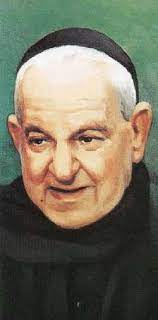Today we look at a most remarkable home missionary hero named George Preca.
George was born on February 12, 1880 in Valletta, the capital city of Malta, the seventh of nine children. His father Vincent was a merchant and health inspector, and his mother was a homemaker.
George had a series of illnesses as a child, and one time he almost drowned in the harbor. Fortunately, he was saved by boatmen.
When he was 6-years old, George’s family moved to Hamrun where he grew up. At the age of 17, one of George’s professors encouraged him to consider priesthood. George took the advice to heart and began studying for the priesthood.
A year before George’s priesthood ordination, his confessor, Fr. Aloysius Galea died. George reported that after the death, Fr. Aloysius appeared to him and encouraged him on his journey to the ordained priesthood.
Unfortunately, shortly before he was ordained, George was diagnosed with acute pulmonary tuberculosis and was not expected to recover. Fortunately, however, he did recover, and he gave credit to St. Joseph. While a seminarian, George had the idea of forming a religious movement of permanent deacons, but he abandoned the idea after he was ordained.
George was ordained on December 22, 1906 and celebrated his first Mass of Thanksgiving on Christmas Day, 1906. Interestingly, as a priest, Fr. George became known for the Nativity plays he established at Christmas time, and this custom remains in nearly all the parishes the nation of Malta.
As a young priest, the first thing Fr. George did was begin teaching youth the Faith. Then, he began teaching the catechism to laborers and other people on the waterfront, and he soon had a group of male catechists around him. This led to Fr. George founding a new religious movement on March 7, 1907 known as the Society of Christian Doctrine. Locally, the people called it by its acronym, M.U.S.E.U.M.
Because of the new movement’s rapid growth and popularity, clerical envy soon arose, and older priests were resentful that Fr. George included many low-skilled and uneducated persons. So, the movement was temporarily put on hold in 1916 until the bishop could formally investigate. Fortunately, the bishop approved the new movement, and eventually, on April 12, 1932, the movement was approved.
In 1910, Fr. George said he had a powerful religious experience as he was walking. A 12-year old boy, pushing a card with a bag of manure, shouted to him, “Lend me a hand!” As soon as George put his hand on the cart, he felt a strong calmness and came to believe that this was a revelation from God that the boy symbolized Jesus, and the wagon symbolized the work of evangelization.
In 1918, Fr. George became a member of the Third Order of Carmelites and took the religious name Franco.
Fr. George was an expert in Italian, English, Maltese, and Latin, and he was a gifted writer. He wrote around 150 booklets, pamphlets and leaflets and published his work in a press he founded in the 1920s. In time, the press became known as Veritas Press, a venerable Catholic publishing company in Malta.
In the 1950s, Fr. George sent six members of the Society of Christian Doctrine to Australia to serve the Maltese who had emigrated there. By 2016, there were 1,2000 members of the Society serving in six countries.
In 1952, Pope Pius XII named him a Privy Chamberlain and gave him the title of Monsignor. Fr. George never even picked the papers telling him of the honor, and he never wore the vestments of a monsignor; being a humble parish priest and home missionary was all he wanted.
In 1957, Fr. George wrote what he called the Mysteries of Light, a new decade of the Rosary. In 2002, Pope John Paul II revised them and added this decade to the Rosary.
Fr. George died on July 26, 1962, at the age of 89. Pope Benedict XVI canonized him in 2007.
St. George Preca’s feast day if May 9. He is a patron saint of catechists, the Society of Christian Doctrine, Malta, and various cities of Malta.



